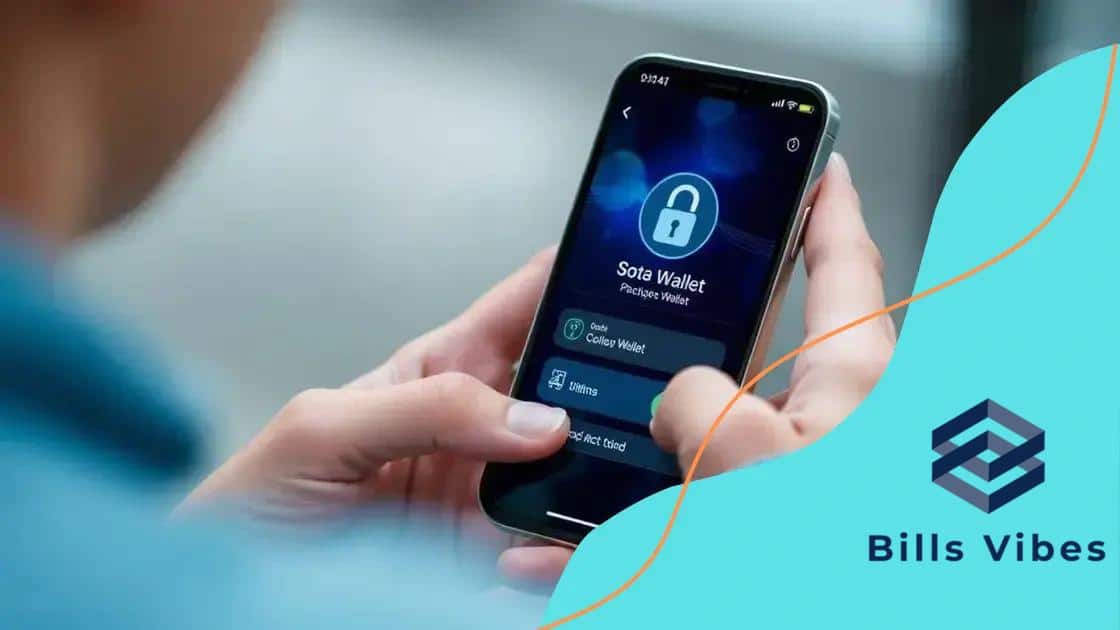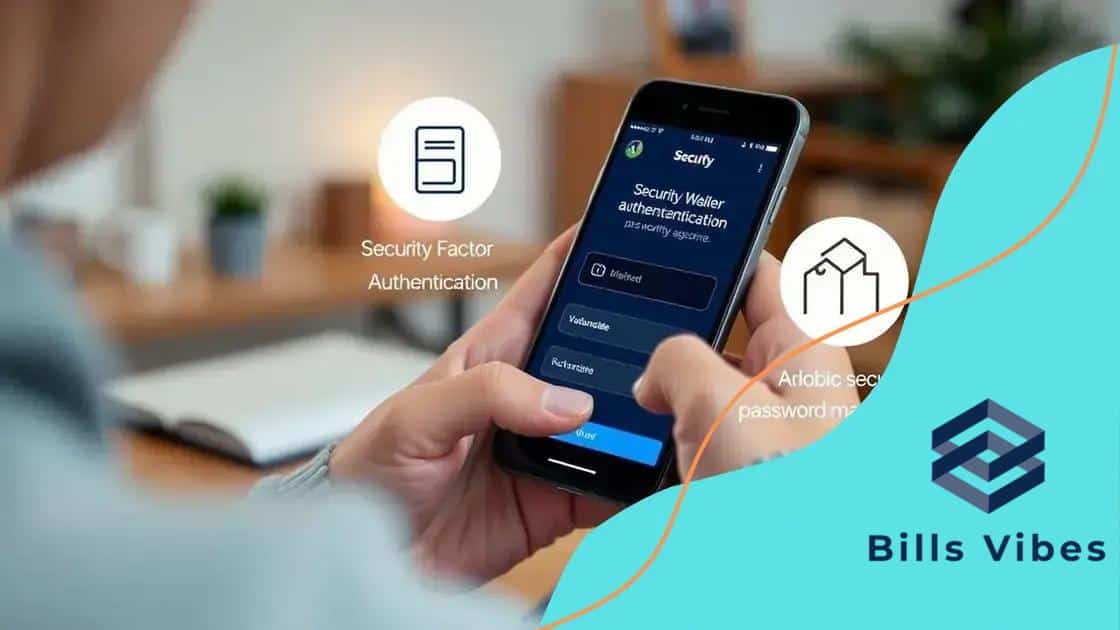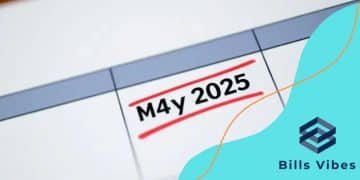Digital wallet security tips to protect your money

To secure your digital wallet, enable two-factor authentication, use strong passwords, regularly update your software, and monitor transactions for unauthorized activity.
Digital wallet security tips are crucial in today’s tech-savvy world. With more people relying on digital wallets for transactions, it’s increasingly vital to understand how to protect your information. Are you doing enough to safeguard your finances?
Understanding digital wallets and their vulnerabilities
Digital wallets are becoming increasingly popular for managing money, making payments, and storing digital assets. Understanding their features and vulnerabilities is crucial for everyone who wants to use them safely. By familiarizing yourself with the risks, you can better protect your hard-earned cash.
What Are Digital Wallets?
Digital wallets, also known as e-wallets, allow users to store various types of information securely, including payment details and identification. They come in two main forms: hardware wallets and software wallets. While hardware wallets are physical devices, software wallets are applications on your smartphone or computer. Each type has its own strengths and vulnerabilities.
Common Vulnerabilities in Digital Wallets
Despite their convenience, digital wallets can be vulnerable to attacks. Here are some vulnerabilities to be aware of:
- Phishing attacks: Users may receive fake messages that appear to be from legitimate services, prompting them to provide personal information.
- Malware: Malicious software can be used to steal information from your device.
- Weak passwords: Using simple or predictable passwords makes accounts easy to hack.
By recognizing these vulnerabilities, users can take steps to mitigate potential risks. This may include enabling two-factor authentication, regularly updating your software, and being cautious about granting app permissions.
When considering a digital wallet, look for well-reviewed apps known for their security features. Research customer feedback and independent security assessments to make informed choices. Remember, your digital wallet is only as secure as your understanding of its functions and the precautions you take.
Common digital wallet security threats
With the rise of digital wallets, understanding common security threats is essential. Many users are unaware of the risks present when using these convenient tools. Knowing about these threats can help you take necessary precautions to protect your money.
Types of Security Threats
Several security threats can compromise your digital wallet. Here are a few common ones:
- Identity theft: Cybercriminals may attempt to steal your personal information to access your wallet.
- Unauthorized transactions: Without proper security, someone could make transactions without your consent.
- Malware attacks: Malicious software can infect your device, potentially allowing hackers to steal your wallet credentials.
Understanding these threats is just the beginning. You also need to learn how they can occur. For instance, identity theft often happens through phishing emails or fake websites. This emphasizes the importance of always verifying the sources from which you provide information.
How to Recognize Risks
When using a digital wallet, be alert to common signs of security risks. If an app behaves oddly, like asking for permissions it shouldn’t need, this is a red flag. Always read reviews before downloading new apps. Users often share their experiences, which can guide you in making safer choices.
Additionally, be cautious about public Wi-Fi networks. Using your digital wallet over unsecured connections can expose you to dangers. Consider using a VPN for an extra layer of protection when accessing your wallet in public spaces.
Best practices for securing your digital wallet

Securing your digital wallet is crucial to protect your assets and personal information. By following some best practices, you can significantly reduce the risks involved in using these convenient tools.
Enable Two-Factor Authentication
One of the most effective ways to secure your digital wallet is to enable two-factor authentication (2FA). This adds an extra layer of security beyond just your password. With 2FA, you’ll need to provide a second form of identification, like a text message code or an authentication app. This makes it much harder for hackers to gain access to your wallet.
Regularly Update Your Software
Keeping your digital wallet software up to date is vital. Updates often include security patches that fix vulnerabilities. If you’re using an app, make sure to check for updates regularly. Automatic updates help ensure you are always protected with the latest security features.
- Set strong and unique passwords: Avoid using the same password across multiple accounts. Consider using a password manager to help generate and store secure passwords.
- Monitor your transactions: Keep a close eye on your wallet’s activity. Report any unauthorized transactions immediately.
- Use secure networks: Avoid public Wi-Fi when accessing your wallet. Instead, use secure internet connections or a VPN.
Education is another key element in securing your digital wallet. Familiarize yourself with common scams and phishing tactics. Staying informed helps you recognize threats and avoid falling victim to them.
Ultimately, being proactive is essential. Evaluate your security regularly to identify any weak points. By adopting these best practices, you can enjoy the convenience of your digital wallet while keeping your financial information safe.
How to choose a secure digital wallet
Choosing a secure digital wallet is essential for protecting your finances. With many options available, it’s important to know what to look for. The right wallet can safeguard your information and money.
Factors to Consider
When selecting a digital wallet, consider several important factors. Security features should be your top priority. Look for wallets with strong encryption methods and those that offer two-factor authentication.
Reputation and Reviews
Research the wallet’s reputation. Read user reviews and check ratings on app stores. High ratings usually indicate a reliable product. You can also find third-party reviews online that evaluate different wallets based on security, usability, and customer support.
- Supported currencies: Ensure the wallet can handle the currencies you plan to use.
- Fees: Check the fee structure, as some wallets charge for transactions or conversions.
- User interface: A simple and intuitive interface can make managing your funds easier.
Additionally, check if the wallet offers backup options. This feature is vital in case you lose access to your account. Some wallets provide a recovery phrase, allowing you to restore your funds easily in emergencies.
It’s also wise to consider whether you prefer a hardware or software wallet. Hardware wallets are physical devices that store your information offline, offering enhanced security. Software wallets are apps that can be convenient for everyday use but may be more vulnerable to online threats.
Steps to take if your wallet is compromised
If you suspect that your digital wallet has been compromised, it’s important to act quickly. Taking the right steps can help you recover your funds and protect your information.
Immediate Actions
First, immediately change your password. Use a strong and unique password that combines letters, numbers, and symbols. If your wallet has two-factor authentication enabled, ensure that it is still active. This can prevent unauthorized access even if someone has your password.
Monitor Your Accounts
Next, monitor your financial accounts for any suspicious activity. Review recent transactions for any that you do not recognize. If you spot any fraudulent transactions, report them to your bank or wallet provider right away.
- Notify Your Wallet Provider: Contact the customer support of your digital wallet provider to inform them of the situation. They can assist in securing your account.
- Check Linked Accounts: If your wallet is linked to other accounts, review those as well for any signs of unauthorized access.
- Use Security Software: Run a virus scan on your devices to check for malware that may have led to the compromise.
After taking immediate actions, consider withdrawing any remaining funds to a new wallet that you have set up with strong security measures. This helps protect your remaining assets while you resolve the issue.
Finally, educate yourself about security best practices in the future. Awareness of potential threats can help prevent similar situations from happening again. Regularly update your security settings and keep informed about new security features offered by your wallet provider.
FAQ – Frequently Asked Questions about Digital Wallet Security
What should I do if I suspect my digital wallet is compromised?
Immediately change your password and enable two-factor authentication if it’s not already on. Monitor your transactions closely for any unauthorized activities.
How can I choose a secure digital wallet?
Look for wallets that offer strong encryption, two-factor authentication, and good user reviews. Always check if the wallet has a good reputation.
How often should I update my digital wallet software?
You should update your wallet software whenever a new version is available. This helps ensure that you have the latest security features and fixes.
Is it safe to use a public Wi-Fi connection for digital wallet transactions?
It’s not safe to use public Wi-Fi for transactions. If you must, always use a VPN to protect your connection and data.






